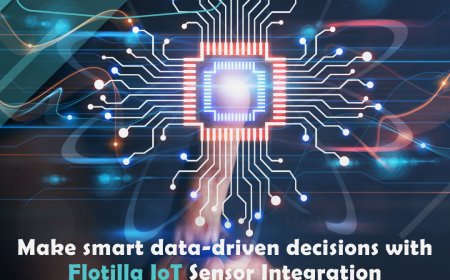Social Impact Management Application Unleashed: A New Era of Transparent, Inclusive, and Measurable Change
Social Impact Management Application Unleashed: A New Era of Transparent, Inclusive, and Measurable Change
In the age of purpose-driven enterprises and conscious capitalism, the emergence of a Social Impact Management Application is reshaping how organizations, NGOs, communities, and stakeholders approach impact strategy. The conventional methodsrelying on outdated spreadsheets, email threads, and periodic, siloed reportingno longer suffice in a fast-paced digital landscape where stakeholders demand transparency, accountability, and real-time insights. As the need to quantify and amplify social good intensifies, organizations are turning to intuitive, tech-enabled solutions like Social Impact Management Application to bridge this critical gap.
This powerful digital solution is not just another dashboard; it's a shift in how collaboration and decision-making happen across impact-driven teams. With its holistic architecture and community-centric design, it caters to grassroots movements, social enterprises, international NGOs, and purpose-driven businesses alike. But what makes this platform revolutionary? Lets dive deeper.
Decoding the Need: Why Social Impact Must Be Managed Differently
Traditional project management tools are not designed to reflect the nuanced dynamics of social impact work. While they may track deliverables or allocate resources, they fall short of capturing the ripple effects that social initiatives generatelike behavioral shifts, capacity building, or long-term community empowerment.
A dedicated Social Impact Management Application transforms this process by embedding equity, decentralization, and context-sensitive coordination directly into its structure. It empowers users to define outcomes collaboratively, co-create strategies with those most impacted, and measure success not just in numbers, but in stories and relationships. This human-centered model is foundational to creating systemic and sustainable change.
A New Architecture: Collaborative, Non-Hierarchical, and Dynamic
One of the most compelling features of this innovative Social Impact Management Application is its architecture built for horizontal collaboration. Unlike rigid organizational software, it enables dynamic structuringsupporting peer-to-peer networks, coalitions, and grassroots initiatives that dont follow traditional command-and-control models.
For example, Social Roots' application allows users to visualize roles and relationships through dynamic org charts, providing clarity without enforcing hierarchy. You can adapt in real-time, whether youre building a mutual aid network or managing a multi-stakeholder initiative across regions. This agile infrastructure ensures responsiveness, inclusivity, and continuous learningtraits essential to the impact sector.
Built for the Frontlines: Empowering Communities and Their Voices
At the heart of the Social Impact Management Application is its commitment to centering the voices of communities most impacted. This is achieved through features that enable direct community participation in planning, implementation, and feedback loops. Instead of decisions being made in boardrooms far removed from the field, this software enables co-design and decentralizes control.
The interface is designed for accessibility, ensuring low digital literacy does not become a barrier to engagement. This democratization of input is crucial when working across diverse geographies, cultures, and causes. Whether its Indigenous leaders shaping climate resilience programs or youth-led groups coordinating gender justice campaigns, the application serves as a digital equalizer.
From Data to Insight: Tracking What Truly Matters
Impact measurement is often where most projects faltereither due to poor tracking mechanisms or misaligned metrics. The Social Impact Management Application redefines impact tracking by allowing users to design and customize outcomes and indicators that resonate with their community and mission.
Gone are the days of chasing arbitrary KPIs set by distant funders. Now, teams can track behavioral shifts, relational outcomes, and cultural changes, using both qualitative and quantitative data. The platform even integrates storytelling as a valid form of evidence, recognizing the richness of lived experience as a valuable data source.
Moreover, this application supports secure data sharing, ensuring that sensitive community information remains protected and under the communitys control. These ethical safeguards are a breath of fresh air in a world increasingly concerned about digital exploitation.
The Role of AI and Automation: Amplifying, Not Replacing, Human Connection
Artificial Intelligence in the Social Impact Management Application is used thoughtfullynot to replace human interaction, but to enhance coordination, reduce redundant efforts, and surface relevant insights. From intelligent notifications to impact trend analysis, the AI tools embedded within this platform help teams stay focused on high-value tasks rather than administrative burdens.
For instance, automated role assignments, dynamic group configurations, and intuitive task management features ensure smoother collaboration. Real-time updates and predictive insights help prevent project derailment before it happens. This strategic use of technology allows impact workers to do what they do bestconnect, listen, respond, and adapt.
From Vision to Action: Scaling Impact with Confidence
Scalability is often the Achilles heel of grassroots and early-stage initiatives. As teams grow and projects expand, maintaining clarity, accountability, and purpose alignment becomes increasingly difficult. Thats where a smart Social Impact Management Application becomes indispensable.
By offering modular scalability, this solution grows with your needs. Whether youre managing a local food sovereignty project or coordinating an international coalition on refugee rights, the platform provides the infrastructure to scale without losing your values or coherence. Role clarity, task dependencies, multi-stakeholder visibility, and outcome reporting remain robust even as your ecosystem becomes more complex.
Whats more, this application also integrates seamlessly with other toolsensuring your existing tech stack can work in harmony rather than competition.
A Step Towards Regenerative Systems and Ethical Technology
This is more than just a tech product; it's a movement toward regenerative systems thinking. Every component of the Social Impact Management Application is designed to support interconnectedness, feedback, and adaptation. It's grounded in principles that align with regenerative leadership: humility, reciprocity, inclusion, and care.
Its developers recognize that technology should serve as a steward, not a savior, in social systems. By enabling communities to lead with data sovereignty, real-time insight, and shared accountability, this tool supports long-term resilience and impactnot short-term fixes or vanity metrics.
Final Thoughts: A Must-Have Tool for the Future of Social Change
The challenges of the 21st centuryclimate change, inequality, political instabilityrequire tools that are as dynamic and interconnected as the problems themselves. A traditional approach wont cut it anymore. If your organization or initiative is serious about systemic impact, embracing a dedicated Social Impact Management Application is not a luxury; its a necessity.
This tool doesnt just streamline operations; it transforms how we work together, center community voice, and ensure that every action we take is aligned with purpose and potential. It's time to say goodbye to outdated methods and step into a future where impact isnt just plannedits felt, shared, and sustained.

































